Scenes from Monday's Post Office Walk
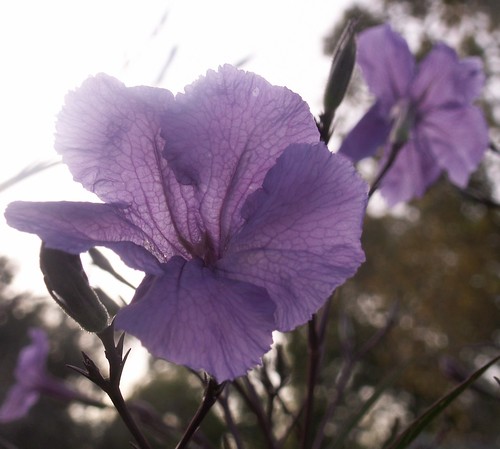
large view (For this and other large views, click the magnifying glass after clicking on the link.)
Mary and I live about a mile from our local post office, where I keep a PO Box. No matter how many times we take our "post office walk," there's something new to photograph....
Though beautiful, this Mexican petunia growing by a neighbor's mailbox is an invasive species. Ruellia brittoniana, Family Acanthaceae. Says Floridata.com, "Mexican petunia is native to Mexico, but it has escaped cultivation and established in disturbed areas in the SE U.S., and can be found invading habitats across Florida. ... Mexican petunia is listed as a Category I invasive species by the Florida Exotic Pest Plant Council. This means that it is 'altering native plant communities by displacing native species, changing community structures or ecological functions, or hybridizing with natives.' This warning applies to all parts of the state of Florida (and other areas with similar mild climates). Where hardy, the Mexican petunia excels at invading wetlands."
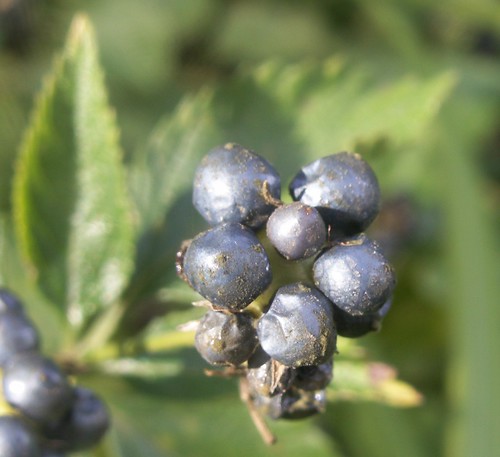
large view
Lantana camara (common lantana), Family Verbenaceae. We pass a small strip mall (one of three we encounter during this walk) on our way to the post office. Very near the mall is a wild lantana patch that's a favorite hangout of various species of butterfly. We didn't see any butterflies on Monday, but I liked how these berries caught the low sun.
There are more than 100 species of lantana. Although not native to Florida, this common variety has been naturalized in the state for centuries. Says Floridata.com, "Pets have reportedly become ill after ingesting lantana. The unripe berries are known to be very toxic and the foliage toxic to livestock. Lantana is listed as a Category I invasive exotic species by the Florida Exotic Pest Plant Council, which means that it is known to be 'invading and disrupting native plant communities in Florida.' Lantana is also invading natural areas in Texas and is a huge problem in Hawaii."
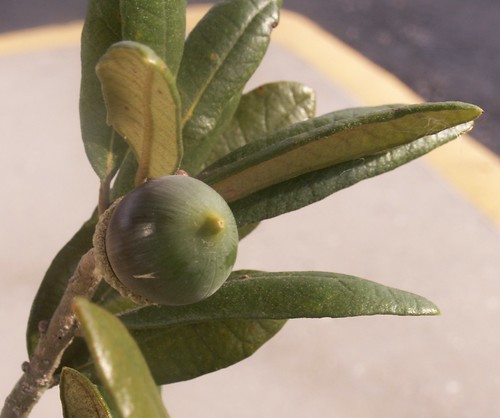
large view
Mary found this fallen twig and its resident acorn. I carried it in my tote bag and photographed it while standing on a walkway at the strip mall nearest to our home.
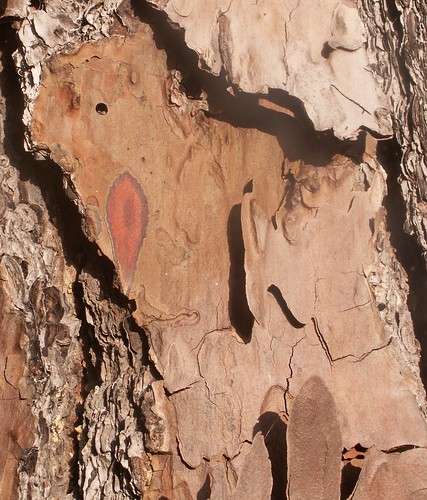
large view
Photographed in a small park a couple of blocks from home.
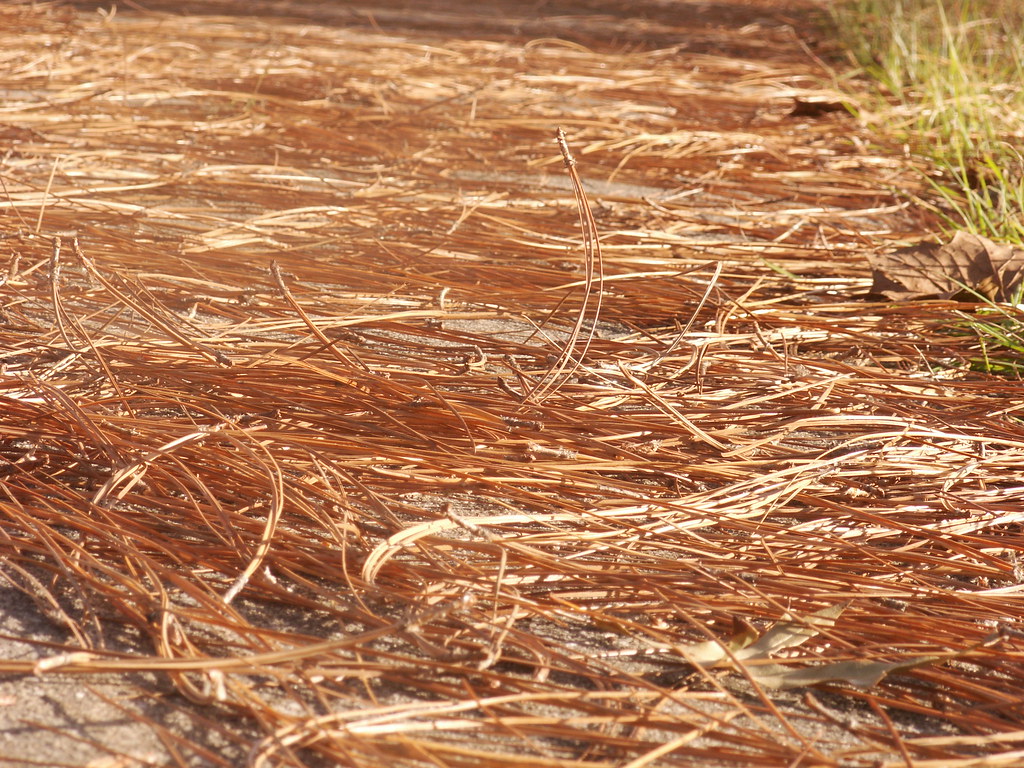
large view
The same park had these fallen pine needles, which I photographed around 5 PM, shortly before sunset. This is as-is out of the camera (about 3 mg.).
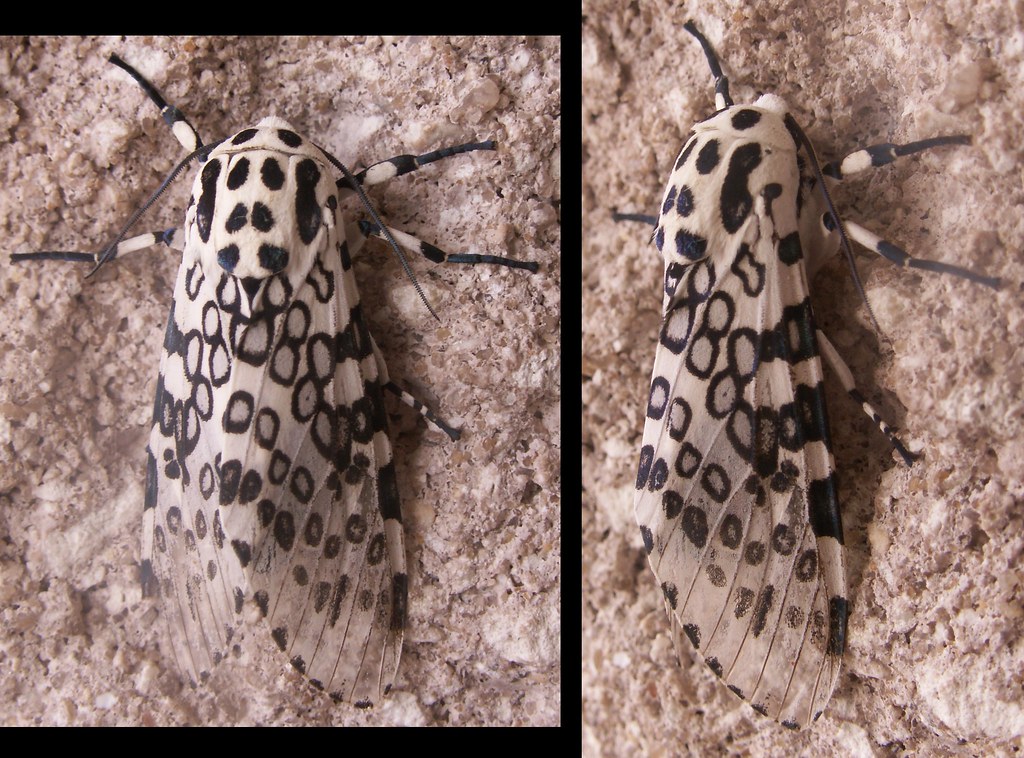
large view
Giant Leopard Moth, Hypercompe scribonia, (reclassified from Ecpantheria), Tiger Moth Family (Arctiidae), subfamily Arctiinae. This one was hanging out in front of the supermarket -- in roughly the same place I'd photographed another of the same species back in March. This time I used a higher resolution.
From Steven H. Long at Clemson University:
"This moth can be found throughout the southeastern United States ranging from New England to Mexico. The immature stage of this moth is a caterpillar, known as the woolly bear caterpillar because it is heavily coated with long black hairs, known as setae. When feeling threatened, the caterpillar will curl up in a ball revealing bright red markings between its many segments. They feed on almost any type of foliage, but only for a brief time before spinning a cocoon and emerging a few weeks later as a mature moth.
"The moth stage of this species is very beautiful. The wings of the moth are solid white, with irregularly shaped black circles all over them giving it the leopard-like appearance. The abdomen is dark blue with orange markings. After emerging from the cocoon, the male species of moth immediately begins its search for a female to mate with. The female moth releases a pheromone into the air for the male moth to find and locate her by. The male will pick up the smell and fly in a zigzag pattern into the wind until he reaches his female and mates with her. After mating has taken place, the male goes out in search of another female while the female he has mated with begins dispersing her fertilized eggs wherever she may find."
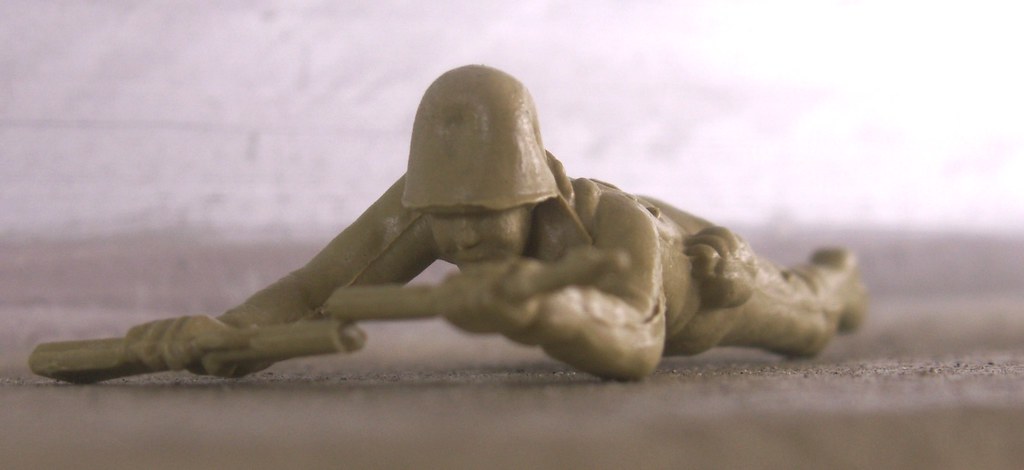
large view
Mary and I had skedaddled to catch a bite at the bakery before it closed for the day. We were about to sit down at an outdoor table when I noticed a trio of toy soldiers perched just outside the bakery's plate-glass window.
Given the frequency with which people comment that they see us walking -- and given that I am often seen perched with my camera in sometimes weird positions -- I joked to Mary that I wouldn't be surprised if people started putting out camera bait to see if I photographed it. I don't think that was the case with the soldiers, but it was a funny thought that came to mind. (Once, when I stopped into the bank, a couple of employees who have seen me photograph insects immediately called my attention to a "big green bug" perched at the drive-through station.)











0 Comments:
Post a Comment
<< Home